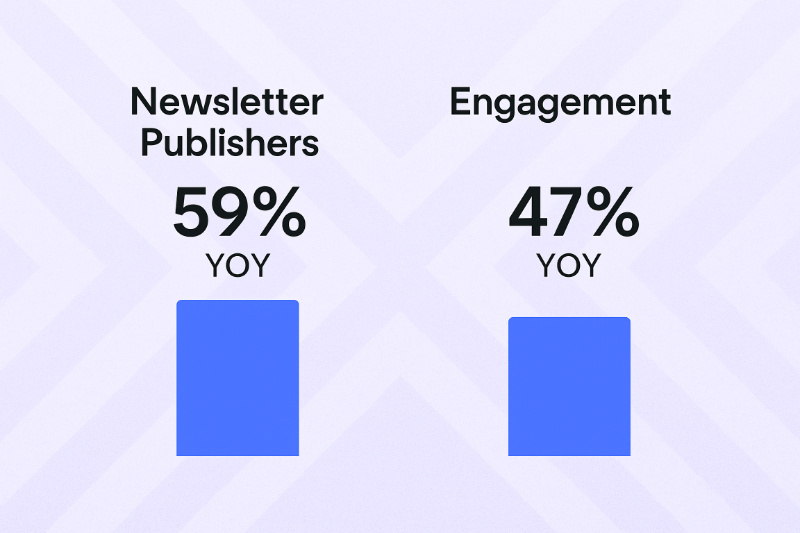LinkedIn recently made a quiet but major update: anyone with a personal profile can now start a LinkedIn Newsletter. No more follower minimum. No more Creator Mode requirement. Just open access to a feature that’s quickly becoming one of the most powerful tools for brand visibility, thought leadership, and content distribution on the platform.
Company pages still need 150 followers to create a newsletter, but if you’re publishing as an individual, the gates are officially open.
At Collective42, we’ve been tracking this space closely, not just because we publish on LinkedIn ourselves, but mostly because we help clients integrate newsletter content into their broader digital marketing strategies. Below, we break down what LinkedIn Newsletters are, who they’re for (and not for), and how to make the most of this tool now that it’s accessible to more people than ever.
What Is a LinkedIn Newsletter?
A LinkedIn Newsletter is a series of long-form articles published through your LinkedIn profile (or company page), focused around a recurring topic. People can subscribe with one click, and they’ll get a notification, and an email, from LinkedIn every time you publish a new edition.
Each newsletter has its own branded page on LinkedIn, complete with a description and archive of past issues. Think of it like your own built-in blog and mailing list, hosted natively on LinkedIn. And because it’s all happening on-platform, there’s no need to worry about email deliverability, forms, or separate tools.
Why LinkedIn Newsletters Are Worth Paying Attention To
This isn’t just a nice-to-have. It’s becoming a core visibility channel for professionals and companies that want to reach a B2B audience.
Some quick stats from LinkedIn and Stacked Marketer:
- LinkedIn has over 184,000 active newsletters.
- There’s been a 59% increase in newsletter publishers and a 47% jump in engagement year-over-year.
- Over 450 million newsletter subscriptions have been recorded globally.

If you’ve felt like organic reach on LinkedIn has been a bit hit-or-miss lately, newsletters can help cut through that. Your subscribers get notified directly, and your content is easier to find and revisit.
Who Should Be Using LinkedIn Newsletters
- B2B service providers. If you sell to other businesses or professionals – consulting, marketing, SaaS, healthcare, etc. – LinkedIn is where your audience is. A newsletter helps you stay top of mind with prospects and clients alike.
- Founders and execs with a point of view. If you’re already posting on LinkedIn or speaking at events, a newsletter lets you consolidate your thinking into longer-form, recurring content that people can subscribe to.
- Companies looking to build brand awareness and thought leadership. You don’t need a full-blown content team. A newsletter gives you a repeatable, high-signal way to publish insights, announcements, or curated POVs.
- Anyone with valuable content but no email list. Newsletters give you the distribution power of LinkedIn without needing to manage an email service or build a list from scratch.
And Who Might Want to Skip It
- If your audience isn’t on LinkedIn. For B2C or younger audiences who spend more time on platforms like TikTok or Instagram, this may not be your best move.
- If you don’t have the time or resources to publish consistently. Starting a newsletter and abandoning it two posts in is worse than not starting one at all. Better to wait until you have a plan or get help executing one.
- If you’re already running a successful email newsletter. You might not want to manage two tracks. That said, repurposing your content for LinkedIn is often worth the lift.
- If you want direct access to your list. With LinkedIn, you don’t “own” your subscriber list. You get analytics, but you can’t export emails or message subscribers outside of LinkedIn.
Best Practices (That Don’t Feel Like a Chore)
- Pick a name that makes sense. It doesn’t need to be clever. It needs to tell people what the newsletter is about, and why they should care. For example: “Biotech Growth Insights” or “The Retail Ops Brief.”
- Lead with value. Your newsletter isn’t a pitch deck. It’s a recurring opportunity to show that you know what you’re talking about, and that you’re paying attention to what’s going on in your space.
- Stay consistent, but realistic. Weekly is great. Biweekly is totally fine. Monthly works too. Just be consistent and don’t overcommit.
- Use a clean format. Break up your content. Use headlines, bullets, short paragraphs. People scan. Make it easy.
- Include a call-to-action if it makes sense. Invite people to reach out. Link to a relevant page, like a landing page, free demo or a contact form. But don’t force it.
- Promote it outside of LinkedIn. Add it to your email signature. Mention it in your blog. Cross-post on other platforms. It all feeds back into the loop.
For more best practices check out LinkedIn’s own list.
Quick Setup (Now Easier Than Ever)
LinkedIn has simplified access:
- Anyone with a personal profile can now start a newsletter (no more follower minimum or Creator Mode requirement).
- Company pages still need 150 followers and an active admin to create one.
Just go to “Write Article” on your profile, choose “Create a Newsletter,” and fill in the title, description, and publishing frequency. Once you publish the first post, LinkedIn invites your followers to subscribe. From there, it’s all about consistency.
Final Thoughts
LinkedIn Newsletters aren’t brand new, but the barriers to entry are now gone, and that changes the game. You can now build a recurring, opt-in audience of professionals without ever setting up a form or dealing with email deliverability.
It’s not for everyone. But for companies in B2B, or anyone with insight and expertise to share, it’s a low-effort way to show up, add value, and stay top of mind.
We’re already helping a few of our clients build their newsletter strategies, and we’re happy to help you think through if it’s worth exploring.
Have questions or want to brainstorm? Let’s talk.

